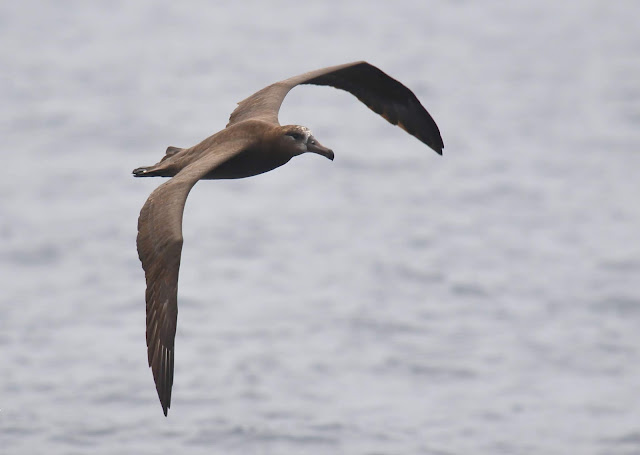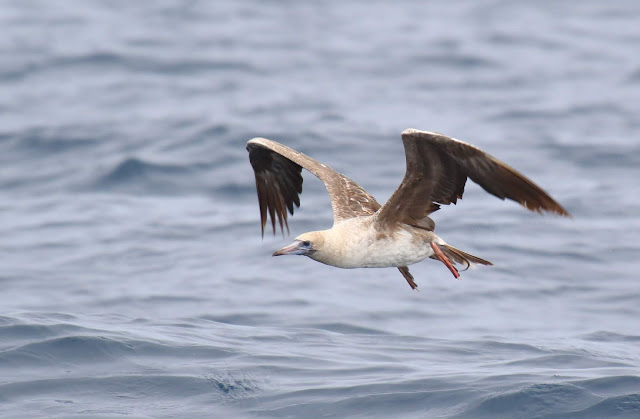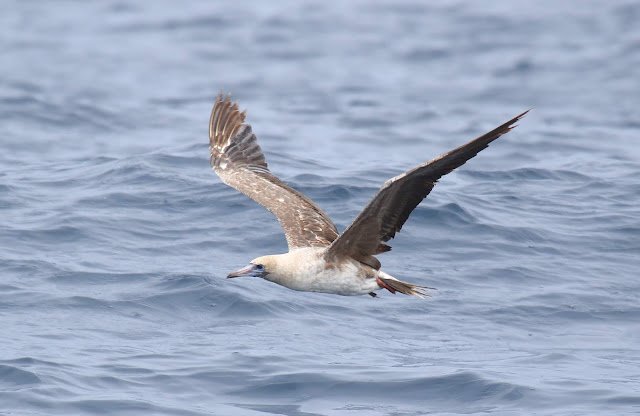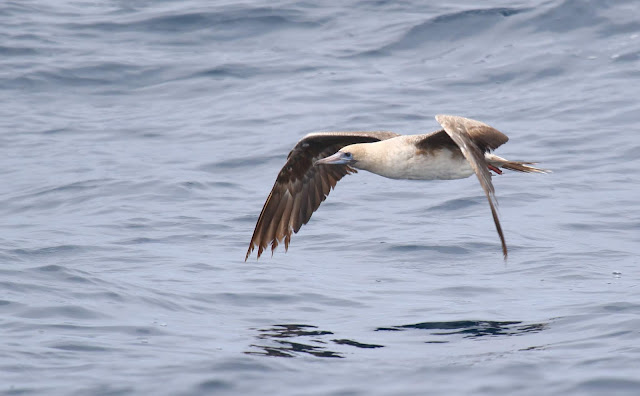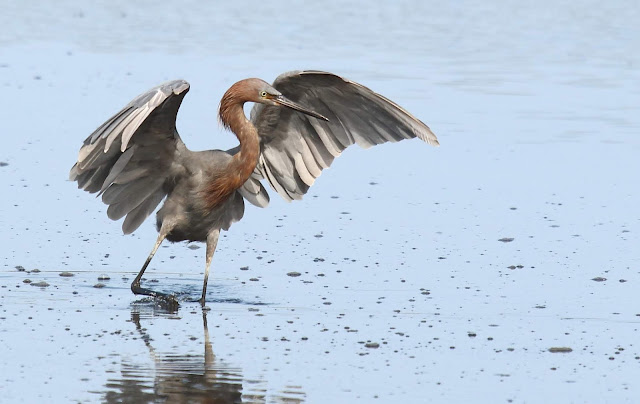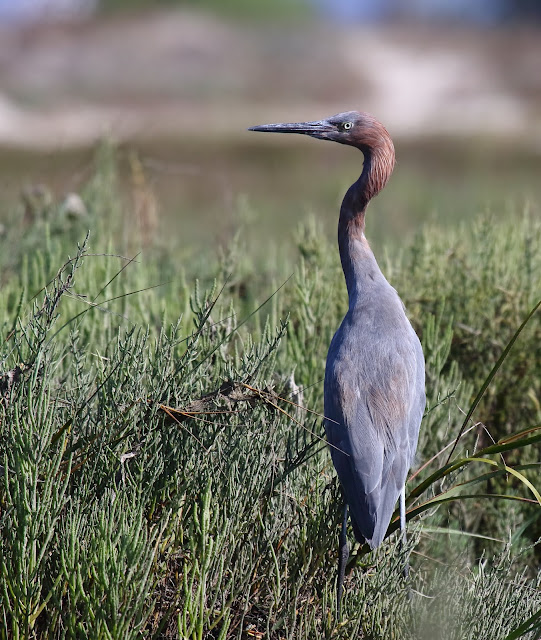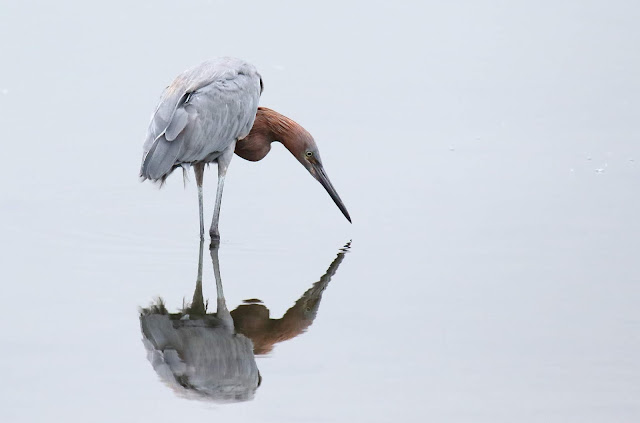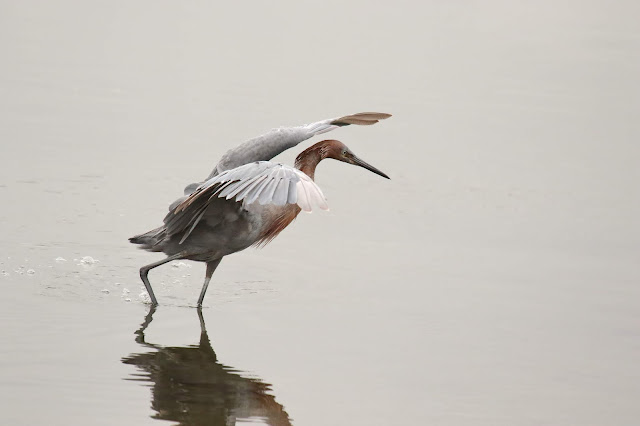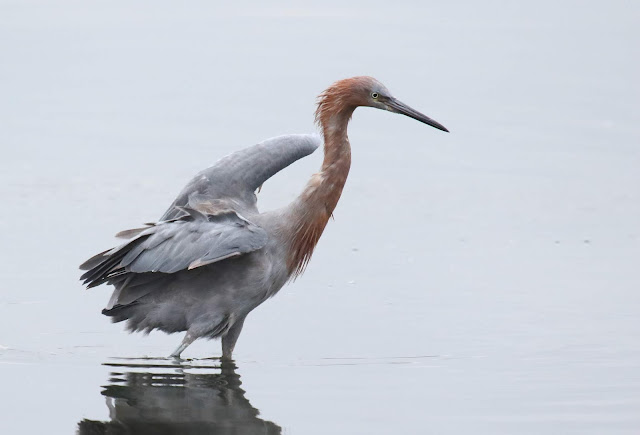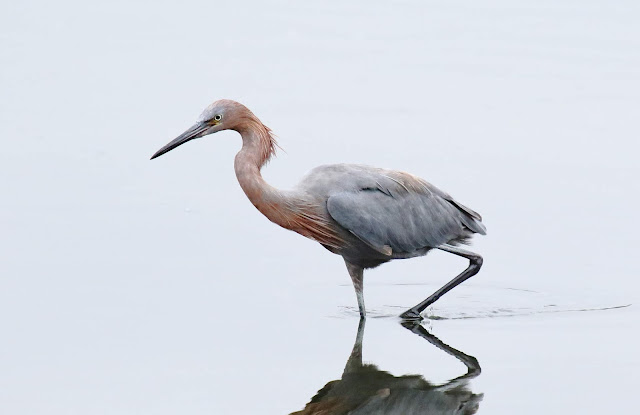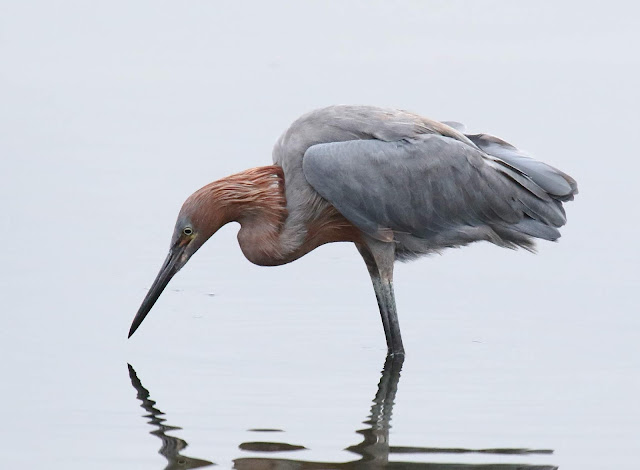It took me over two years to find my first Reddish Egret in San Diego. My first was
December 31, 2015. Since then I've seen them almost a dozen times. A recent bird was feeding close to shore at the San Diego River mouth allowing an amazingly close photo opportunity.
 |
Reddish Egret. San Diego, California. August 12, 2018.
Guess what photo is now my screen saver? |
A note on this photo: The camera settings for the above photo was 1/1250 and f/7.1. The camera chose Auto-ISO 1000, but I brightened it one full stop up so the final image was shot at ISO 2000. However, when I got it back on my computer the water was still dark gray. I decided it would look better as a "high key" photo, so I pushed it up at least another full stop (equivalent to ISO 4000 or higher). I increased contrast and color intensity. Then I adjusted the white balance to about 6000K, which warmed up the strong blue cast caused by the overcast skies.
Here is an account of my photos of this single bird, in order.
After arriving at Robb Field I walked up on the dike, recording the species I saw. Almost immediately I noted the Reddish Egret working the channel below me. Thus, this first series of photos is looking down on the egret from about 60 feet away and about 20 feet above the water.
I didn't make any immediate adjustments to my "generic birding" camera settings: 1/1250 f/7.1 Auto-ISO. The second photo in the series I adjusted the exposure, lightening the original photo in post-processing at home. These photos show well the hyperactive feeding method of this species: running, hopping, chasing with wings held open to provide shade to better peer into the water.
After these initial shots I clambered down the dike to sit on a rock near the water's edge and take these lower-angle photos. I also bumped the exposure up a full stop, doubling the ISO, which I kept on Auto-ISO mode.
I wanted to get both the Reddish Egret and Snowy Egret in the same shot. I had to set negative exposure to not over-expose the bright white of the smaller egret. This, of course, causes the water to appear darker, as the next shot shows.
And I kept shooting...
At this point I saw other birders looking over the Elegant Tern flock on the sand bar mid-channel. I left the egret and walked over to talk with Susan Smith who had picked out a single Common Tern amid more than 500 Elegant Terns in one flock. Another birder whom I had not met before was there. The eBird report for the morning indicates it must have been Yonghee Lee. Soon thereafter Terry Hurst arrived.
My
eBird list for this spot.
After this the sun came out. I finally left my birding companions and walked back to the Reddish Egret. So I have another dozen photos to share in
Part 2: Sun.













